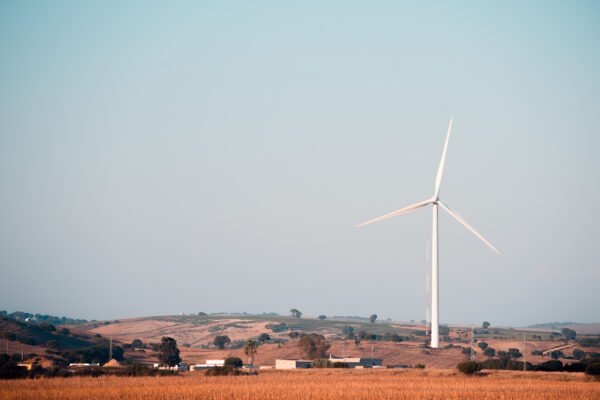Water Infrastructure Projects in Africa: Building Resilience and Supporting Growth

Introduction
Water infrastructure projects in Africa are essential to addressing one of the continent’s most critical challenges—ensuring access to clean and reliable water for its rapidly growing population. Africa is home to nearly 1.4 billion people, with many regions experiencing water scarcity, poor sanitation, and inadequate infrastructure. As urbanization accelerates, the demand for water for domestic use, agriculture, and industry continues to rise, putting immense pressure on already limited water resources.
The development of water infrastructure is vital for public health, food security, and economic growth across Africa. Investing in projects such as dams, pipelines, irrigation systems, and wastewater treatment plants can help secure water supplies, support agriculture, and protect against the impacts of climate change. For governments, development agencies, and private investors, the water sector presents significant opportunities to create lasting impact while generating financial returns.
This article explores the landscape of water infrastructure projects in Africa, highlights key initiatives, and identifies opportunities and challenges for investors in this critical sector.
1. The Importance of Water Infrastructure for Africa’s Development
1.1 Addressing Water Scarcity and Access Issues
Water scarcity is one of Africa’s most pressing challenges, with many countries experiencing inadequate access to clean drinking water. According to the World Health Organization (WHO), more than 400 million people in sub-Saharan Africa lack access to basic drinking water services. In some areas, water scarcity is exacerbated by climate change, droughts, and mismanagement of water resources.
Developing water infrastructure is crucial for addressing these challenges. Projects that improve water distribution, build new reservoirs, and expand access to clean water can significantly improve public health outcomes, reduce poverty, and enhance resilience to climate shocks.
1.2 Supporting Agriculture and Food Security
Agriculture is the backbone of many African economies, accounting for about 60% of employment on the continent. However, Africa’s agricultural sector remains highly vulnerable to water shortages, droughts, and irregular rainfall. Investment in irrigation systems and water storage facilities is essential for increasing agricultural productivity, improving food security, and making farming more resilient to climate change.
Water infrastructure projects that support the efficient use of water in agriculture—such as drip irrigation, modern irrigation canals, and rainwater harvesting systems—can increase crop yields, reduce water wastage, and help farmers adapt to changing weather patterns. In turn, this supports economic growth and reduces the risk of food insecurity.
1.3 Enabling Industrial and Urban Development
Water infrastructure also plays a crucial role in supporting industrial growth and urban development in Africa. As cities expand and new industries emerge, the demand for water for industrial processes, energy production, and municipal use continues to rise. Without reliable water supply and wastewater treatment infrastructure, industrial growth can be constrained, and urban centers can face severe water shortages.
Investing in modern water infrastructure—including desalination plants, wastewater treatment facilities, and pipelines—can help cities and industries secure the water they need for sustainable development. This is particularly important in regions experiencing rapid urbanization, such as Lagos, Nairobi, and Johannesburg, where growing populations are putting additional pressure on water resources.
2. Key Water Infrastructure Projects in Africa
2.1 Rwanda Bulk Water Supply Project
The Rwanda Bulk Water Supply Project is a landmark public-private partnership (PPP) aimed at improving access to clean water for Kigali, the capital city, and its surrounding areas. Rwanda, like many African nations, has faced challenges with water supply, particularly in urban areas where population growth has outpaced infrastructure development.
Project Highlights:
- Objective: To provide up to 40 million liters of treated water per day to Kigali.
- Partnership: The project is being developed through a PPP, with private investors financing and operating the bulk water infrastructure under a long-term concession agreement with the Rwandan government.
- Impact: The project is expected to provide reliable and clean water to over 500,000 people in Kigali, significantly improving public health outcomes and supporting economic development.
The Rwanda Bulk Water Project is one of the first large-scale water PPPs in sub-Saharan Africa, setting a precedent for future water infrastructure projects across the continent.
2.2 Lesotho Highlands Water Project (LHWP)
The Lesotho Highlands Water Project (LHWP) is one of Africa’s most ambitious water infrastructure initiatives, aimed at harnessing water resources from the highlands of Lesotho to supply water to South Africa and generate hydropower for Lesotho.
Project Highlights:
- Objective: To transfer water from the Lesotho Highlands to South Africa’s Gauteng Province, home to the cities of Johannesburg and Pretoria, while generating hydropower for Lesotho.
- Phases: The project has been implemented in multiple phases. Phase I, completed in 2004, included the construction of dams and tunnels, while Phase II, currently underway, involves the construction of additional dams and infrastructure to increase water supply and energy generation.
- Impact: The project provides a reliable water supply to one of South Africa’s most important economic regions while generating clean hydropower for Lesotho. It has also created jobs and promoted regional cooperation.
The LHWP is a key example of how large-scale water infrastructure projects can support cross-border water security and energy generation, benefiting multiple countries in the region.
2.3 Nairobi Water Supply Master Plan (Kenya)
Nairobi, Kenya’s capital and largest city, faces significant challenges with water scarcity and unreliable water supply, which has been exacerbated by rapid population growth and industrial development. The Nairobi Water Supply Master Plan aims to address these challenges by expanding the city’s water infrastructure and securing water resources for the future.
Project Highlights:
- Objective: To improve water supply and distribution for Nairobi through the development of new dams, pipelines, and water treatment facilities.
- Key Components: The project includes the construction of the Northern Collector Tunnel, which will increase water intake from rivers in the Aberdare Range, as well as the development of additional reservoirs and treatment plants.
- Impact: Once completed, the project will significantly increase Nairobi’s water supply capacity, providing clean water to millions of residents and supporting industrial growth in the region.
The Nairobi Water Supply Master Plan is part of Kenya’s broader effort to modernize its water infrastructure and ensure sustainable water management in the face of growing urbanization.
2.4 Greater Cairo Wastewater Treatment Plant (Egypt)
The Greater Cairo Wastewater Treatment Plant is a key infrastructure project designed to improve sanitation and wastewater management in Cairo, Egypt’s capital and largest city. Cairo’s rapid urbanization has put immense pressure on its existing water and sanitation infrastructure, leading to pollution and public health challenges.
Project Highlights:
- Objective: To treat and safely dispose of wastewater generated by the city’s population, which exceeds 20 million people.
- Capacity: The treatment plant has the capacity to process up to 1.2 million cubic meters of wastewater per day, making it one of the largest wastewater treatment facilities in Africa.
- Impact: The project improves public health by reducing waterborne diseases, enhances environmental protection by preventing pollution of the Nile River, and supports agricultural use of treated wastewater for irrigation.
This project underscores the importance of investing in wastewater management systems to ensure sustainable urban development and protect water resources in Africa’s growing cities.
3. Opportunities for Investors in African Water Infrastructure
3.1 Public-Private Partnerships (PPPs)
Public-private partnerships (PPPs) offer significant opportunities for investors looking to participate in water infrastructure development in Africa. Many governments are turning to PPPs to finance, build, and operate water supply and sanitation systems, particularly in urban areas where the demand for water services is highest.
PPPs allow investors to share the risks and rewards of infrastructure development with governments, while benefiting from long-term revenue streams through tariffs, service fees, or concession agreements. Successful examples of PPPs in water infrastructure include the Rwanda Bulk Water Project and the Dakar Water Treatment Plant in Senegal.
3.2 Irrigation and Agricultural Water Management
Agriculture is the largest consumer of water in Africa, accounting for about 70% of total water use. However, much of Africa’s farmland is rain-fed, making it highly vulnerable to droughts and water shortages. Investing in irrigation infrastructure—such as canals, drip irrigation systems, and water storage facilities—can improve agricultural productivity, increase food security, and reduce farmers’ reliance on erratic rainfall.
Investors in the agricultural water sector can explore opportunities in developing modern irrigation systems, water-efficient farming technologies, and public-private partnerships that support smallholder farmers.
3.3 Water Treatment and Desalination
As water scarcity becomes more acute in many African regions, particularly in North Africa and parts of southern Africa, desalination and water treatment technologies are becoming increasingly important. Desalination plants, which convert seawater into potable water, offer a viable solution for coastal cities facing freshwater shortages.
Investors can explore opportunities in building desalination plants and water treatment facilities, particularly in countries like South Africa, Egypt, and Morocco, where water scarcity is a major concern.
Public-Private Partnerships in African Infrastructure: Driving Development and Unlocking Growth
4. Challenges Facing Water Infrastructure Projects in Africa
4.1 Financing and Investment Gaps
Despite the growing demand for water infrastructure, financing remains one of the biggest challenges facing the sector in Africa. Many governments face budget constraints, and large-scale water projects require significant upfront capital investment. While international donors and development finance institutions (DFIs) play a crucial role in funding water projects, there is still a substantial financing gap.
To address this, innovative financing mechanisms, such as blended finance, water bonds, and concessional loans, are needed to attract private sector investment into water infrastructure projects. Investors should also explore opportunities to work with multilateral organizations that specialize in infrastructure financing for emerging markets.
4.2 Regulatory and Governance Issues
Regulatory and governance challenges can pose significant risks to water infrastructure projects in Africa. Inconsistent regulatory frameworks, weak institutions, and corruption can lead to project delays, cost overruns, and inefficiencies. Investors must navigate complex regulatory environments and ensure that contracts and concession agreements are transparent and enforceable.
Governments must also strengthen water governance by developing clear water management policies, promoting transparency, and enforcing regulations that ensure the sustainable use of water resources.
4.3 Climate Change and Environmental Risks
Climate change is exacerbating water scarcity in many parts of Africa, with rising temperatures, changing rainfall patterns, and more frequent droughts affecting water availability. Water infrastructure projects must take these risks into account by incorporating climate resilience measures, such as water conservation technologies, rainwater harvesting, and efficient irrigation systems.
Investors should also consider the environmental impact of water infrastructure projects, ensuring that projects do not contribute to over-extraction of water resources or harm local ecosystems.
5. The Future of Water Infrastructure Projects in Africa
The future of water infrastructure projects in Africa is promising, driven by the continent’s growing demand for water, the need to improve agricultural productivity, and the increasing focus on sustainable development. Governments, international donors, and private investors are recognizing the importance of water security for Africa’s long-term growth, and investment in water infrastructure is expected to rise in the coming years.
With advances in technology, such as smart water management systems, desalination, and wastewater recycling, Africa has the opportunity to build modern, efficient water infrastructure that meets the needs of its people, industries, and ecosystems. For investors, the water sector offers significant opportunities to make a positive impact while generating financial returns.
Conclusion
Water infrastructure projects in Africa are essential for ensuring water security, improving public health, and supporting economic development across the continent. From large-scale initiatives like the Lesotho Highlands Water Project and the Rwanda Bulk Water Supply Project to investments in irrigation, desalination, and wastewater treatment, the opportunities for investors in the water sector are vast.
While challenges such as financing gaps, regulatory issues, and climate risks remain, the potential for long-term returns and social impact makes water infrastructure an attractive destination for investment. By focusing on public-private partnerships, sustainable water management, and innovative technologies, investors can play a key role in securing Africa’s water future.
For more insights on infrastructure and investment opportunities in Africa, explore:




